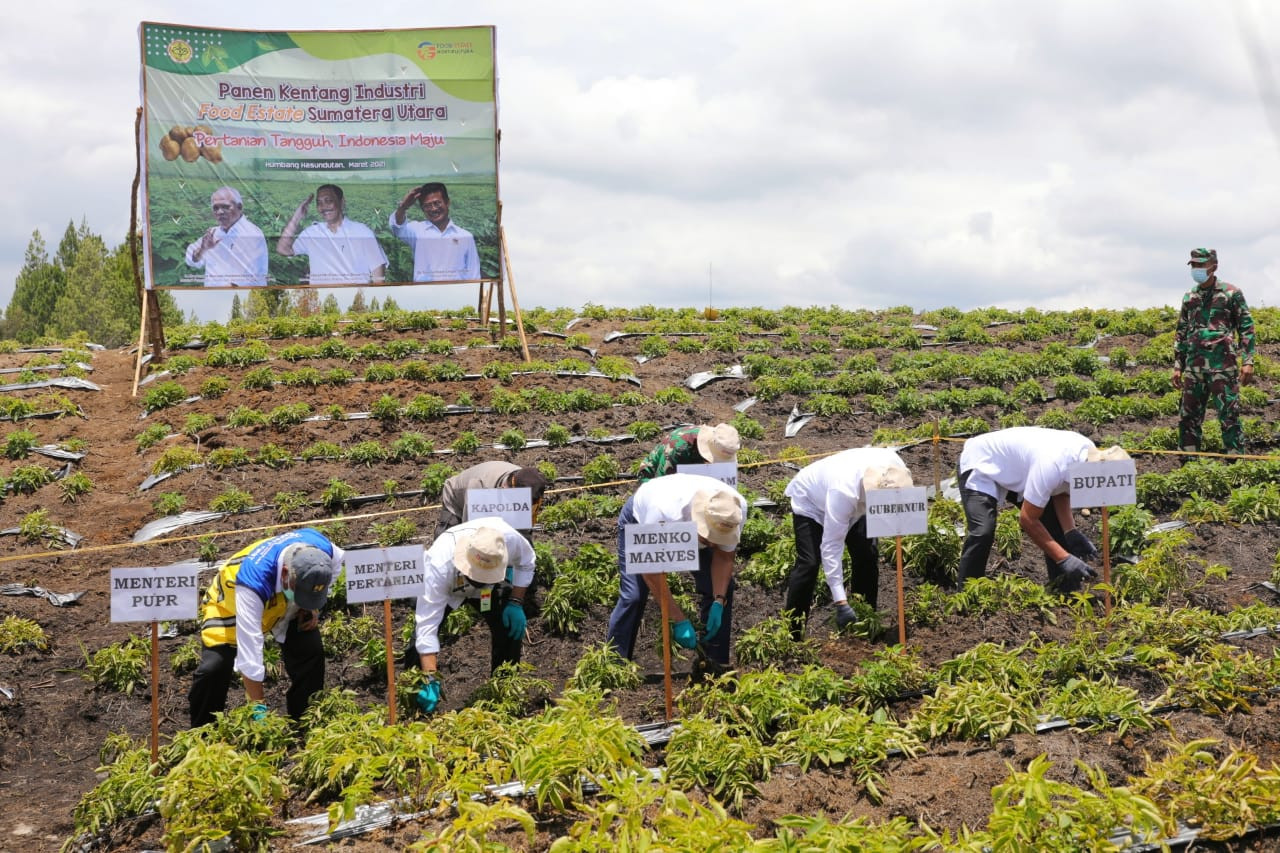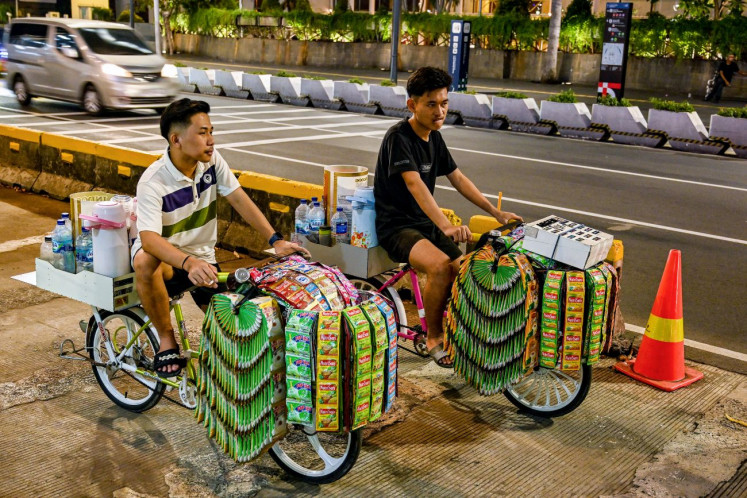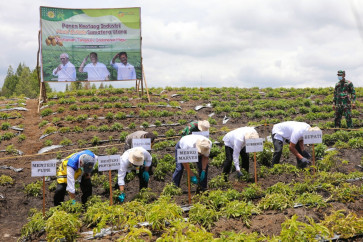Popular Reads
Top Results
Can't find what you're looking for?
View all search resultsPopular Reads
Top Results
Can't find what you're looking for?
View all search resultsThe challenge of monitoring farmers' welfare
Almost 60 percent of poor people live in rural areas, and most of them rely on agriculture as their livelihood.
Change text size
Gift Premium Articles
to Anyone
 Harvesting the first potatoes from a food estate in Humbang Hasundutan regency, North Sumatra, on March 23, 2021 are (from left) Public Works and Housing Minister Basuki Hadimuljono, Agriculture Minister Syahrul Yasin Limpo, Coordinating Maritime Affairs and Investment Minister Luhut Binsar Pandjaitan, North Sumatra Governor Edy Rahmayadi and Humbahas Regent Hasundutan Dosmar Banjarnahor. (Kemenko Marves/Kemenko Marves)
Harvesting the first potatoes from a food estate in Humbang Hasundutan regency, North Sumatra, on March 23, 2021 are (from left) Public Works and Housing Minister Basuki Hadimuljono, Agriculture Minister Syahrul Yasin Limpo, Coordinating Maritime Affairs and Investment Minister Luhut Binsar Pandjaitan, North Sumatra Governor Edy Rahmayadi and Humbahas Regent Hasundutan Dosmar Banjarnahor. (Kemenko Marves/Kemenko Marves)
O
nce, the father of management thinking, Peter Drucker, said "if you cannot measure it, you cannot change it." This quote describes precisely the challenge we are facing when it comes to farmers' welfare in Indonesia.
In the Indonesian context, poverty is still a rural-agricultural phenomenon. Almost 60 percent of poor people live in rural areas, based on a Statistics Indonesia (BPS) report. BPS data also show that most poor people rely on agriculture as their livelihood. According to the National Socioeconomic Survey (Susenas) results, around 46 percent of the heads of poor households depended on agriculture as their main job in 2020.
These statistics show that improving farmer welfare is key for poverty alleviation in Indonesia. Unfortunately, the lack of reliable indicators to measure the development of farmer welfare over time is still an issue.
For the time being, the farmer terms of trade (NTP) have been misused widely to monitor farmer welfare development monthly. The indicator has been used officially by the National Development Planning Agency (Bappenas) as one of the development targets to be achieved. The target is stated in the National Medium-Term Development Plan (RPJMN) 2020-2024.
President Joko “Jokowi” Widodo said in a speech in mid-August of this year that farmers' welfare had improved significantly from June 2020 to June 2021, as indicated by a consistent increase in NTP from 99.6 to 103.59.
However, the use of NTP as an indicator to measure the development of farmer welfare has been questioned and criticized by academia and experts for a long time. As a ratio price index, it is considered less sensitive and even biased in measuring the state and development of welfare. In other words, the relationship between the change of the indicator value and the change of farmer welfare is problematic.
Technically, the indicator is a ratio of two price indexes: the price received by farmers index (IT) and the price paid by farmers index (IB). The former is assumed to capture the change in farmers' income from agriculture due to changes in the prices of their agricultural products. The latter is assumed to measure the change of farmers' expenditure due to the change in prices of goods and services consumed by farmers, agricultural inputs and capital goods.

















